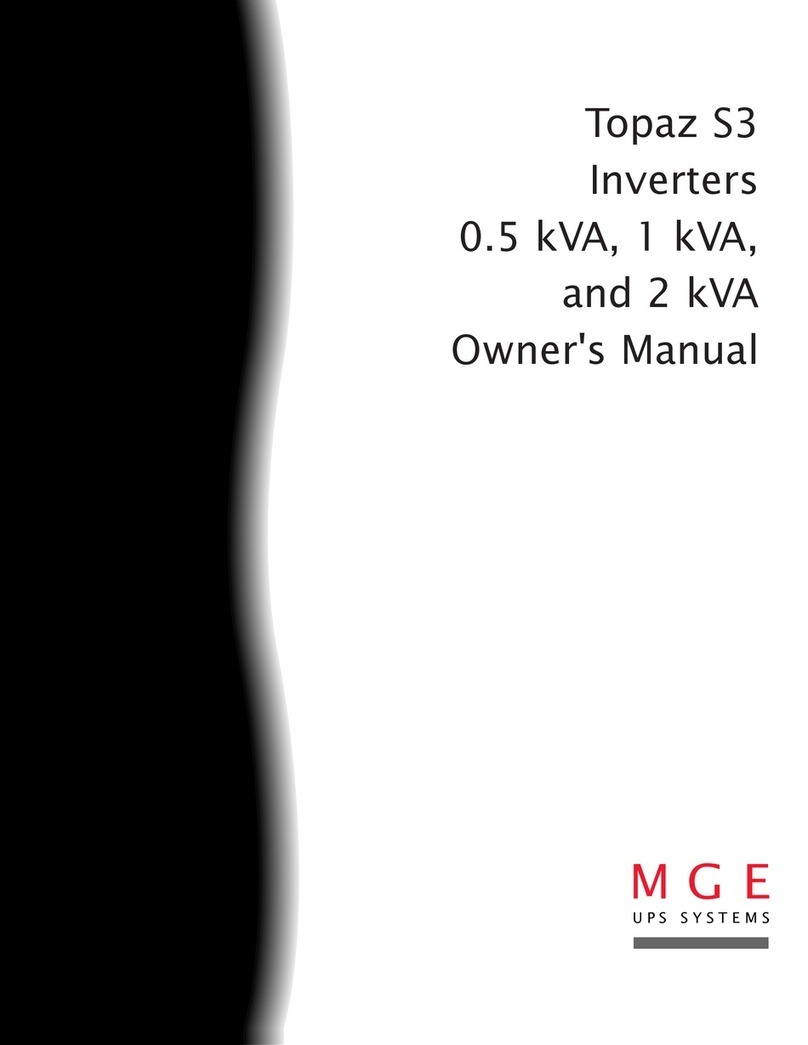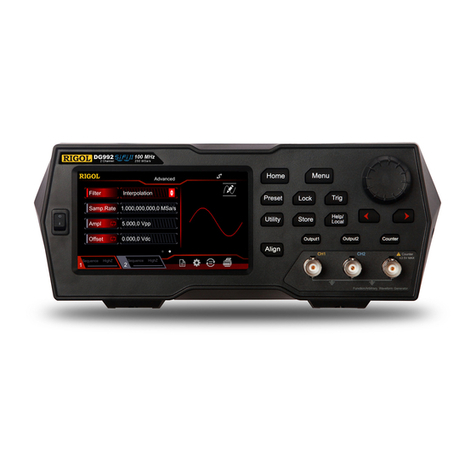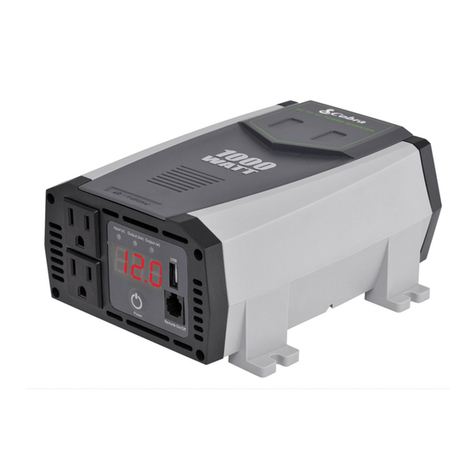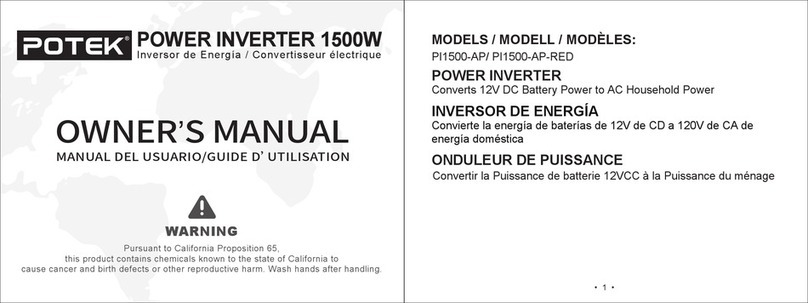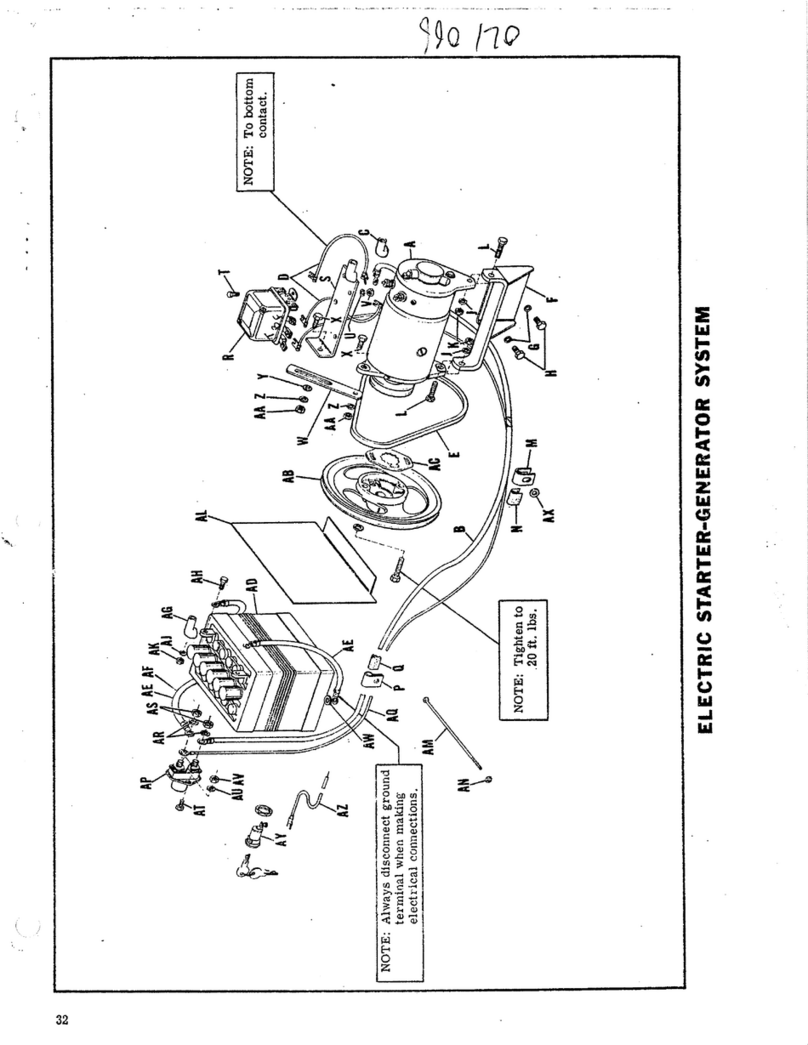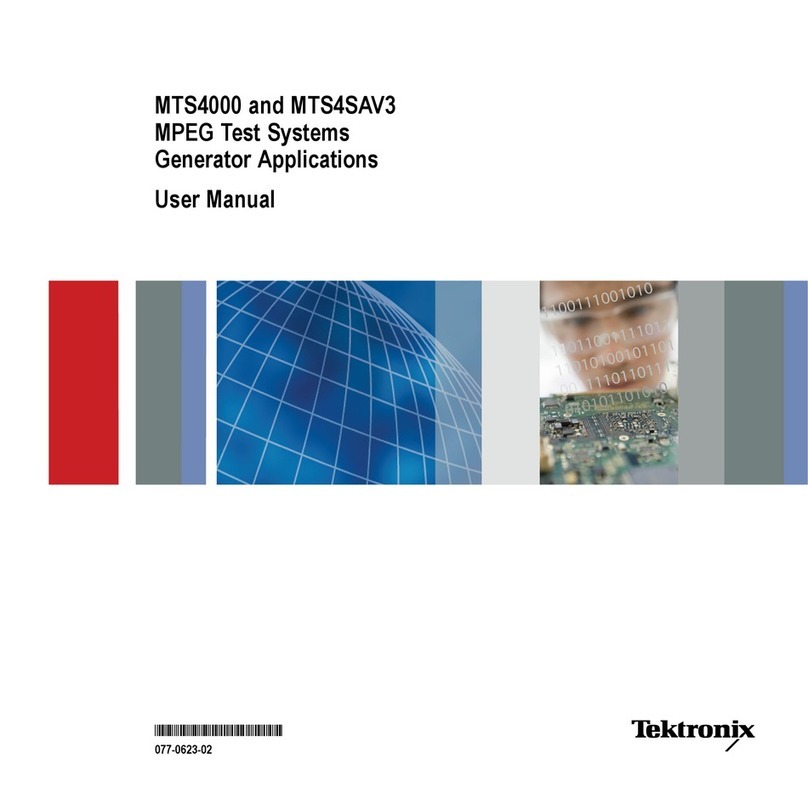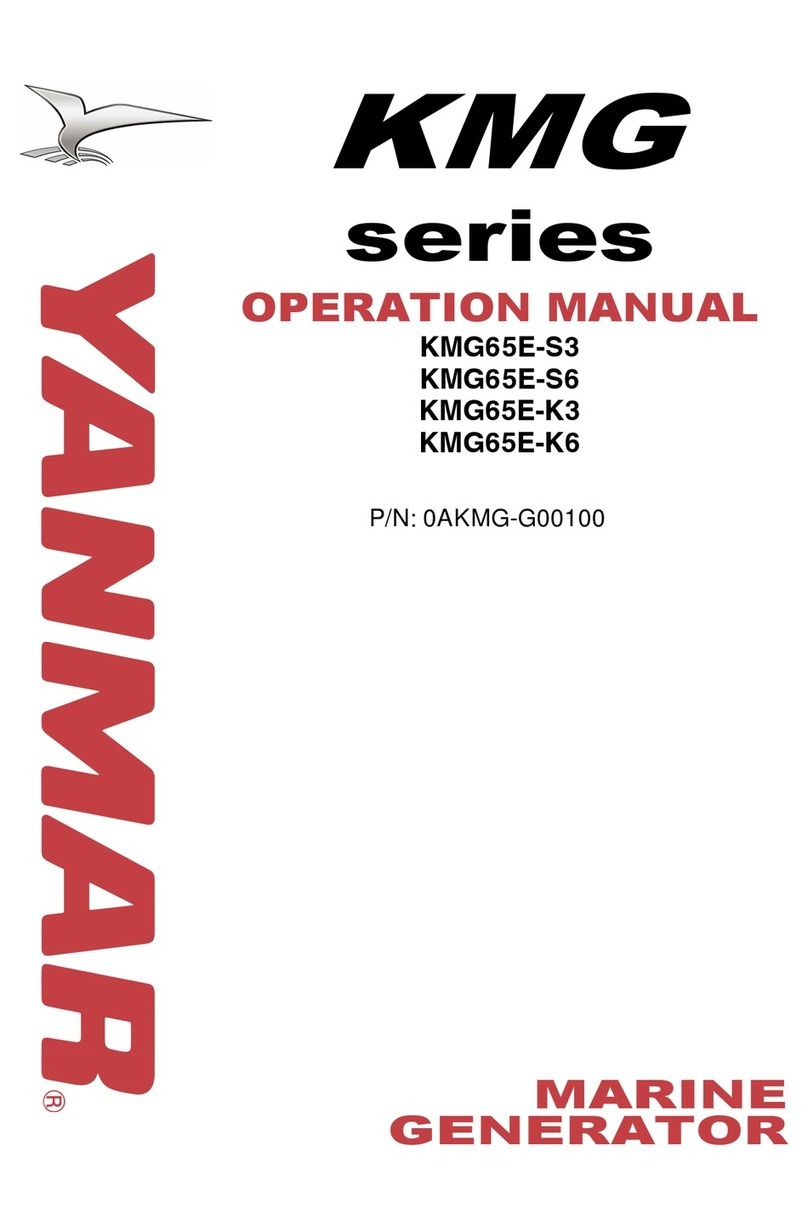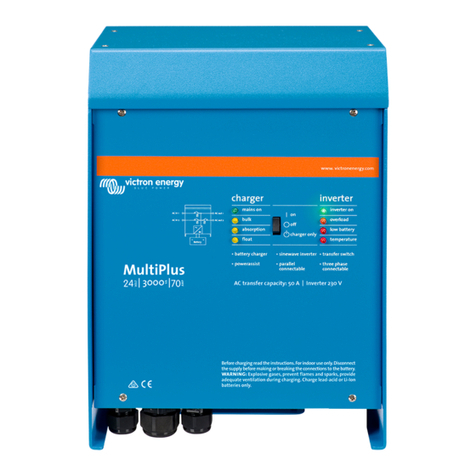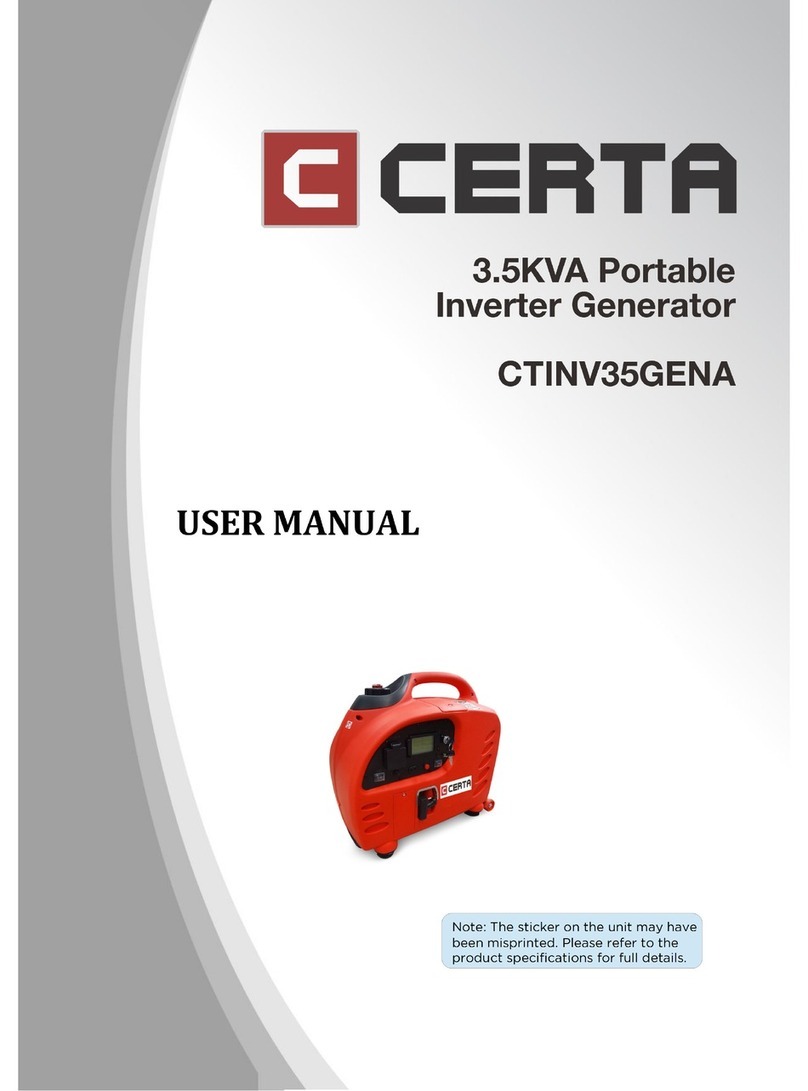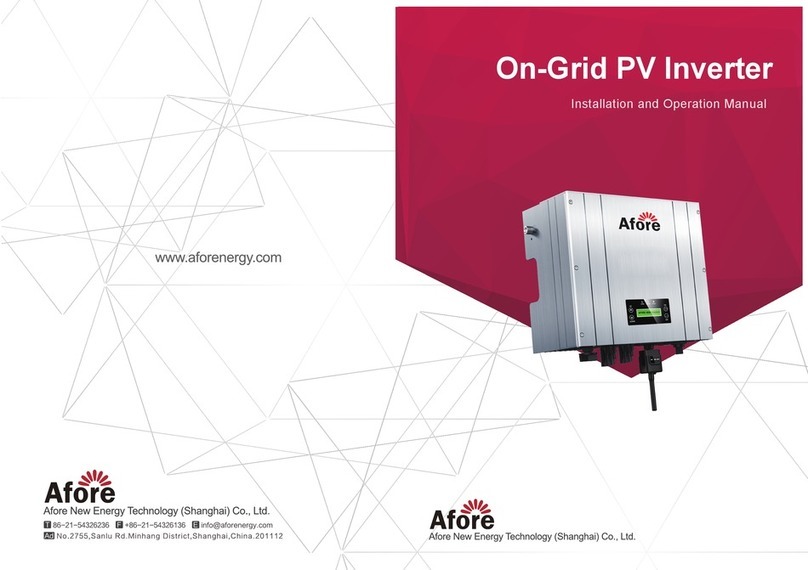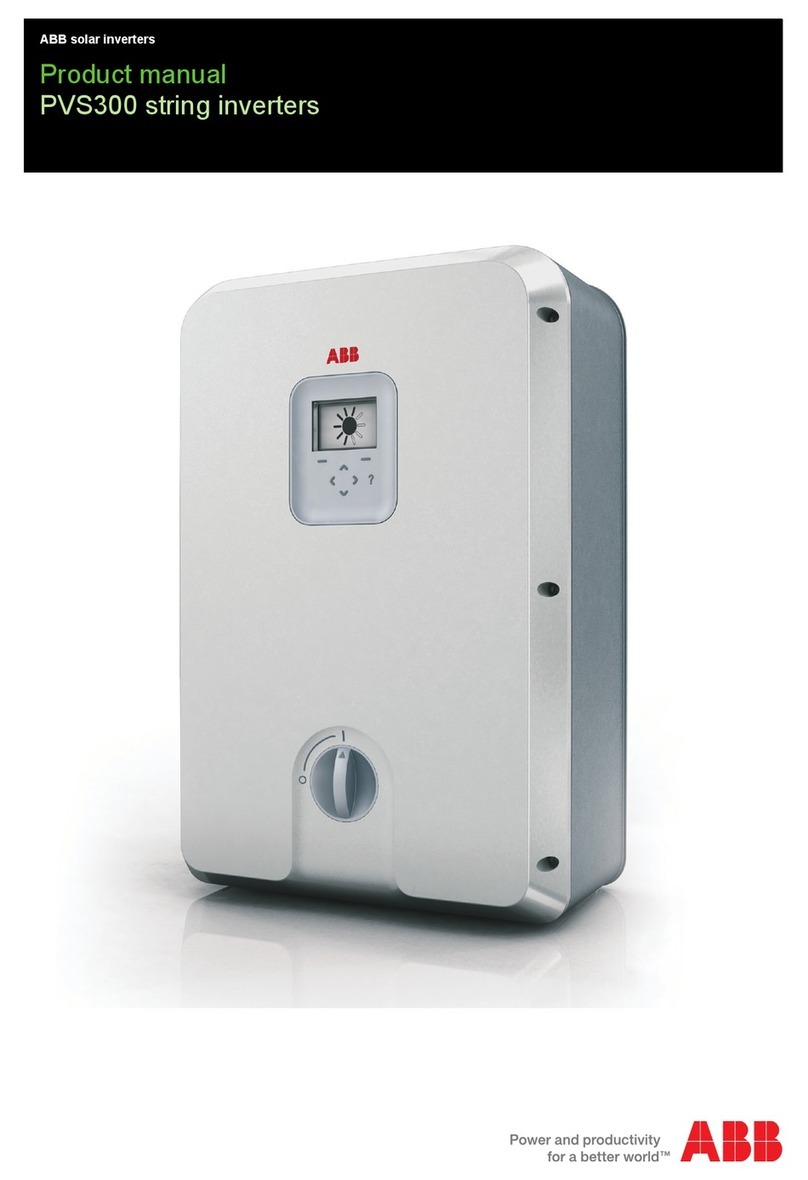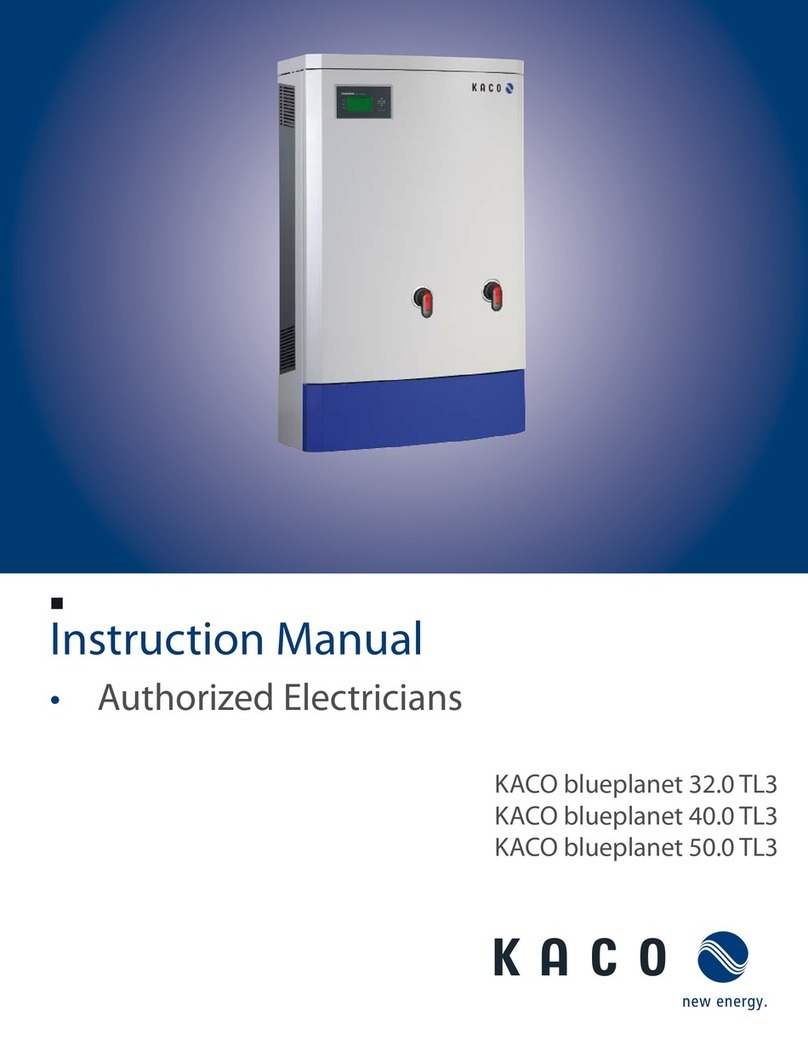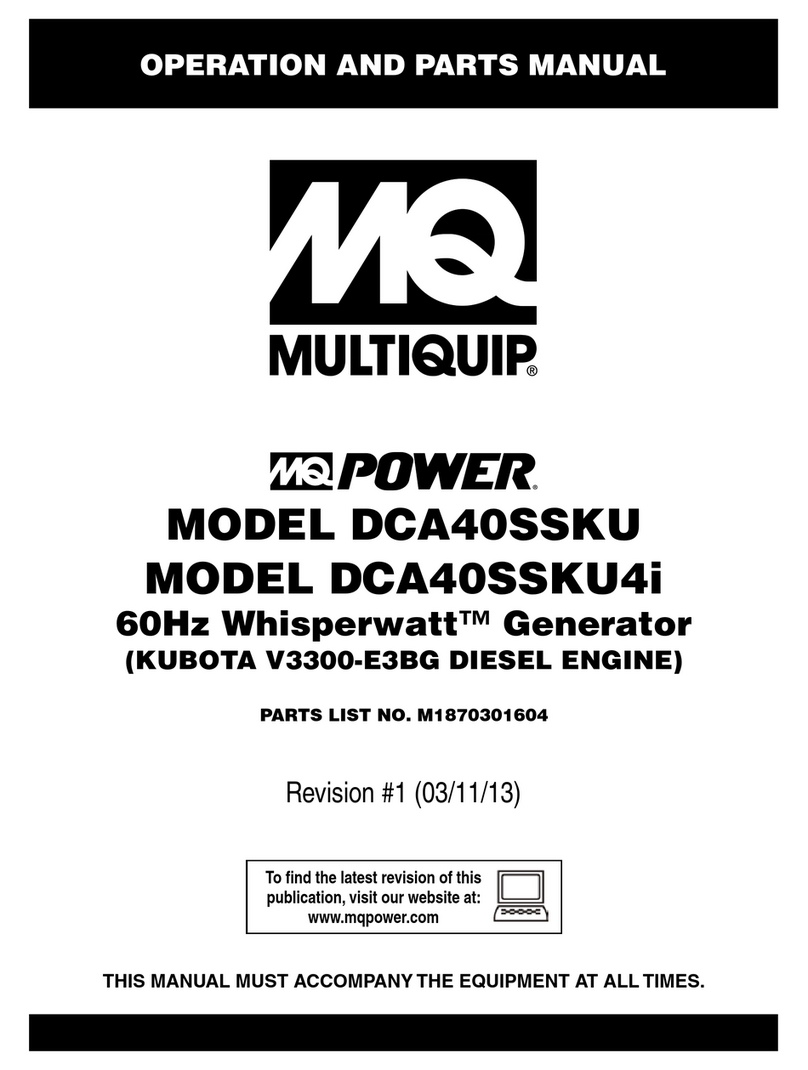DENSITY DENSITY 390 User manual

Installation manual
DENSITY 390 - 900 - 1500 - 2400
Density fog generator range 390 – 900 – 1500 – 2400, is based
on the same mechanical platform. The physical size is the same
for the 4 units, but the central heat exchange part, is dierent
in size, and thereby the machines are dierent in generated fog
volume, covering places from tiny rooms, up to large warehouses.
www.densityglobal.com | help@densityglobal.com
Version 1.1.4

Summary
13. Final test - Customers use - Annual maintenance
14. Product information
15. Warnings
1. Prepare for installation Remove the lid
Components identication
Mounting holes in bottom plate
Hole for security screw
2. Mounting Installation on a wall
Installation in ceiling
3. Wiring Mains supply cable
Mains connection
Signal cables
Cable reliefs
4. Nozzle adjustment How to adjust the nozzle to the correct angle
5. Backup battery Type of battery used
Installation and connection of the backup battery
6. Signal Inputs Type of signals to use on this fog machine
The dierent inputs, ARM, SHOOT, PANIC, PIR
Connection examples, dierent wiring diagrams
7. Signal Outputs Type of signal relay outputs
How to change relay output between NO and NC
The 5 dierent relay outputs
8. Dipswitch Description of the 8 dipswitches
9. Shooting time setting How to set the shooting time
Shooting table for the 4 models
10. Fog uid system The Density fog rell
How to connect the fog rell
Where to place the fog rell
Reset the uid measuring system
11. Front LED’s Description of the 3 front LED’s
12. Errors (RESET) List of errors that might occur on the fog machine
How to RESET an Error
page 2/20Version 1.1.4
www.densityglobal.com | help@densityglobal.com

1. Prepare for installation
Remove 2 + 2 screws from the ends and remove the lid.
Identication of main components.
Watch a video
showing how to open
the Density fog
generator.
Holes for installation.
1. Holes for mounting.
2. Hole for the security
1. Holes for mounting.
2. Hole for the security screw.
3. Adjustable nozzle.
4. Tamper switch.
5. Fluid pump.
6. IP/LAN connection.
7. IP/LAN card.
8. Connection for control.
9. Connection for relay output.
10. Reset button.
11. Main power connection.
page 3/20
www.densityglobal.com | help@densityglobal.com
Version 1.1.4

2. Mounting
Holes for installation.
« Keyhole » for installation.
Hang unit using « Keyhole ».
Dimensions for holes.
Mount screws on the wall.
Watch a video
showing how to
install the Density
fog generator.
1. Holes for mounting.
2. Hole for the security screw.
page 4/20
www.densityglobal.com | help@densityglobal.com
Version 1.1.4

3. Wiring
4. Nozzle adjustment
Use a 14 wrench to loosen the nozzle nut.
Use a screwdriver inserted in the nozzle hole for
adjusting to the correct angle.
While holding the nozzle in the correct position
using the screwdriver, then gently tighten the nut
with the wrench.
Watch a video
showing how to ajust
the nozzle.
Signal cables and IP/LAN cable to inserted on top of the machine. Use
cable relief to fasten the cables.
Live, Neutral, and Earth to be connected as shown. Mains cables to be
inserted in the bottom plate of the machine. Use cable relief to fasten
the cable.
1. Hole to insert signal cables.
2. IP/LAN cable.
3. Cable relief for the signal cable.
4. Cable relief for the signal cable.
5. Hole to insert the main cable.
6. Main power connection.
7. Cable relief for main cable.
page 5/20
www.densityglobal.com | help@densityglobal.com
Version 1.1.4

5. Backup battery
Insert 2 long cable ties as pictured.
Tighten the ties and cut the end part.
*We recommend to use Fiamm 12V 2Ah battery type FG20201 Vds or equivalent (BAREN type, for example).
Insert battery* in the cable ties and tighten.
Connect the battery*, red to red, black to black.
Watch a video
showing how to
insert and connect
the backup battery.
page 6/20
www.densityglobal.com | help@densityglobal.com
Version 1.1.4

6. Input signal
The Density fog generator has 4 +1 inputs to control the fog operation.
4 inputs are galvanically isolated optocoupler inputs. They are normally triggered by 12VDC applied.
You can choose if the inputs shall be activated by NO or NC logic (Normal Open or Normal Closed),
meaning that you can choose to activate the inputs, by 12VDC Removal or by 12VDC Applied.
1 input is dedicated to the use of a verifying PIR sensor. This input is not galvanically isolated. This special
input has a separate 12VDC power supply to power the PIR sensor.
The 4 inputs:
Input 1: ARM - ARM input for ARM or DISARM the machine.
Input 2: SHOOT - Will make the machine SHOOT when ARM is activated.
Input 3: IN- 0 - Verication input. Logical function is «AND» with input 2 «SHOOT».
Input 4: IN-1 - PANIC alarm input. Will make the machine SHOOT, regardless of the status of ARM input.
PIR sensor input:
Contact signal - Closes to negative (PIR C to PIR -)
To activate this input, the jumpers W1 is used.
W1 closed activates this PIR input as an “AND” input, meaning that the fog generator is triggered when
both “SHOOT” AND “IN 0” AND “PIR” is activated. (ARM must be activated)
Changing logic (NO or NC):
By turning DIPSWITCH 6 = ON, you select the 3 inputs, ARM, SHOOT and IN 0, to be NC activated.
NC means Normal Closed, and that means that you activate the inputs by 12V Removal. In rest, you will
have 12V applied on the inputs. To activate the inputs, you break the circuit, and thereby you have 12V
removed from the inputs.
page 7/20
www.densityglobal.com | help@densityglobal.com
Version 1.1.4

6.1. Connection diagram examples
COM 3COM 2COM 1
W3
NO
NC
W4
NO
NC
W5
NO
NC
W6
NO
NC
W7
NO
NC
BOOT
USB
C PLUS PCB
W2
NL
FIRETIME
ACTION DAYTIME ACTION NIGHTTIME
INTRUDER SYSTEM DISARMED
FOG GENERATOR DISARMED
RESET
0V
ARM
PRIMARY TRIG
+ 12V
MAINS
FUSE
F4
INTRUDER SYSTEM ARMED
FOG GENERATOR ARMED
INTRUDER SYSTEM IN ALARM
FOG GENERATOR ARMED
FOG GENERATOR SHOOTING
0V
ARM
+ 12V
0V
ARM
+ 12V
12V OUTINPUTOUTPUTPIR
ARM +
ARM -
TRG +
TRG -
IN 1 +
IN 1 -
EMPC
EMP
FLTC
FLT
TMPC
TMP
FVLC
FVL
AUXC
AUX
PIR +
PIR -
PIRC
1
2
3
4
5
6
7
W1
ACTION ALARM
PRIMARY TRIG
PRIMARY TRIG
IN 0 +
IN 0 -
+ 12V
GND
DIPSWITCH 6 MUST BE ON TO
ENABLE NC (Normal Closed) ACTION
IMPORTANT!
DIPSWITCH 8 MUST BE OFF TO
ENABLE NORMAL OPERATION MODE
8
ARM and SHOOT:
To control the fog generator, you use the ARM input on the
fog generator. When you ARM the fog generator, it will be
ready to SHOOT when it is HOT (Green LED must be on and
STEADY).
When you ARM the fog generator, the Blue LED will come on
steady. Now the fog generator is ready and Armed.
To SHOOT (when Ready and ARMED), you activate the TRG
input.
Shooting time as set on the SHOOT-timer.
page 8/20
www.densityglobal.com | help@densityglobal.com
Version 1.1.4

6.2.1 Connection diagram examples
(VERIFICATION SENSOR)
COM 3COM 2COM 1
W3
NO
NC
W4
NO
NC
W5
NO
NC
W6
NO
NC
W7
NO
NC
USB
C PLUS PCB
W2
W1
NL
FIRETIME
ACTION DAYTIME ACTION NIGHTTIME
INTRUDER SYSTEM DISARMED
FOG GENERATOR DISARMED
RESET
0V
ARM
PRIMARY TRIG
+ 12V
0V
+ 12V
PIR SENSOR
STATUS NOT ACTIVATED
IMPORTANT!
JUMPER W1 MUST BE INSERTED
FOR ENABLING PIR FUNCTION
MAINS
FUSE
F4
PIR SENSOR
STATUS ACTIVATED
INTRUDER SYSTEM ARMED
FOG GENERATOR ARMED
INTRUDER SYSTEM IN ALARM
FOG GENERATOR ARMED
FOG GENERATOR READY TO SHOOT FOG
(WAITING FOR THE PIR SENSOR)
0V
ARM
+ 12V
0V
ARM
ALARM TRIG
+ 12V
1
2
3
4
5
6
7
12V OUTINPUTOUTPUTPIR
+ 12V
GND
ARM +
ARM -
TRG +
TRG -
IN 0 +
IN 0 -
IN 1 +
IN 1 -
EMPC
EMP
FLTC
FLT
TMPC
TMP
FVLC
FVL
AUXC
AUX
PIR +
PIR -
PIRC
ACTION ALARM
BOOT
PRIMARY TRIG
INTRUDER SYSTEM IN ALARM
FOG GENERATOR ARMED
VERIFICATION PIR SIGNAL ACTIVE
FOG GENERATOR SHOOTING
0V
ARM
ALARM TRIG
+ 12V
ACTION ALARM + VERIFICATION
0V
+ 12V
DIPSWITCH 6 MUST BE TURNED OFF
TO ENABLE NO (Normal Open) ACTION
DIPSWITCH 8 MUST BE OFF TO
ENABLE NORMAL OPERATION MODE
8
ARM, VERIFY and SHOOT:
To control the fog generator, you use the ARM input on the fog generator. When you ARM the fog
generator, it will be ready to SHOOT when it is HOT (Green LED must be on and STEADY).
When you ARM the fog generator, the Blue LED will come on steady. Now the fog generator is ready and
Armed.
The 2’ input «IN 0» in this diagram, is hardwired and thereby always active.
For SHOOT (when Ready and ARMED), you activate the TRG input, AND you activate the PIR input.
Shooting will happen when BOTH inputs are triggered at the same time.
Shooting time as set on the SHOOT-timer.
page 9/20
www.densityglobal.com | help@densityglobal.com
Version 1.1.4

6.2.2 Connection diagram examples
(SECONDARY PIR SENSOR)
COM 3COM 2COM 1
W3
NO
NC
W4
NO
NC
W5
NO
NC
W6
NO
NC
W7
NO
NC
USB
C PLUS PCB
W2
NL
FIRETIME
ACTION DAYTIME ACTION NIGHTTIME
INTRUDER SYSTEM DISARMED
FOG GENERATOR DISARMED
RESET
0V
ARM
PRIMARY TRIG
+ 12V
MAINS
FUSE
F4
INTRUDER SYSTEM ARMED
FOG GENERATOR ARMED
INTRUDER SYSTEM IN ALARM
FOG GENERATOR ARMED
FOG GENERATOR READY TO SHOOT
0V
ARM
+ 12V
0V
ARM
+ 12V
1
2
3
4
5
7
12V OUTINPUTOUTPUTPIR
+ 12V
GND
ARM +
ARM -
TRG +
TRG -
IN 0 +
IN 0 -
IN 1 +
IN 1 -
EMPC
EMP
FLTC
FLT
TMPC
TMP
FVLC
FVL
AUXC
AUX
PIR +
PIR -
PIRC
ACTION ALARM
BOOT
INTRUDER SYSTEM IN ALARM
FOG GENERATOR ARMED
VERIFICATION SIGNAL ACTIVE
FOG GENERATOR SHOOTING
0V
ARM
PRIMARY TRIG
+ 12V
ACTION ALARM + VERIFICATION
SECONDARY TRIG SECONDARY TRIG SECONDARY TRIG
W1
6DIPSWITCH 6 MUST BE ON TO
ENABLE NC (Normal Closed) ACTION
IMPORTANT!
PRIMARY TRIG
SECONDARY TRIG
PRIMARY TRIG
DIPSWITCH 8 MUST BE OFF TO
ENABLE NORMAL OPERATION MODE
8
page 10/20
www.densityglobal.com | help@densityglobal.com
Version 1.1.4

6.3. Connection diagram examples
(PANIC FUNCTION)
COM 3COM 2COM 1
W3
NO
NC
W4
NO
NC
W5
NO
NC
W6
NO
NC
W7
NO
NC
USB
C PLUS PCB
W2
NL
FIRETIME
ACTION DAYTIME
PANIC BUTTON FUNCTION
ACTION NIGHTTIME
INTRUDER SYSTEM DISARMED
FOG GENERATOR DISARMED
BUTTON NOT ACTIVATED
FOG GENERATOR ACT LIKE
NORMAL INSTALLATION
BUTTON ACTIVATED
FOG GENERATOR SHOOT
RESET
0V
ARM
PRIMARY TRIG
+ 12V
DIPSWITCH 6 MUST BE ON,
TO ENABLE NC (Normal Closed) ACTION
MAINS
FUSE
F4
INTRUDER SYSTEM ARMED
FOG GENERATOR ARMED
INTRUDER SYSTEM IN ALARM
FOG GENERATOR ARMED
FOG GENERATOR READY TO SHOOT
0V
ARM
PRIMARY TRIG
+ 12V
0V
ARM
PRIMARY TRIG
+ 12V
1
2
3
4
6
5
7
12V OUTINPUTOUTPUTPIR
+ 12V
GND
ARM +
ARM -
TRG +
TRG -
IN 0 +
IN 0 -
IN 1 +
IN 1 -
EMPC
EMP
FLTC
FLT
TMPC
TMP
FVLC
FVL
AUXC
AUX
ACTION ALARM
BOOT
INTRUDER SYSTEM IN ALARM
FOG GENERATOR ARMED
VERIFICATION PIR SIGNAL ACTIVE
FOG GENERATOR SHOOTING FOG
0V
ARM
PRIMARY TRIG
+ 12V
ACTION ALARM + VERIFICATION
0V
+ 12V
PIR SENSOR
STATUS NOT ACTIVATED
PIR SENSOR
STATUS ACTIVATED
PIR +
PIR -
PIRC
0V
+ 12V
W1
IMPORTANT!
JUMPER W1 MUST BE INSERTED
FOR ENABLING PIR FUNCTION
8
IMPORTANT!
DIPSWITCH 8 MUST BE OFF TO
ENABLE NORMAL OPERATION MODE The PANIC input can be used for immediate shooting.
The machine needs to be HOT and READY (Green light on
and steady).
The PANIC input will overrule the ARM and the SHOOT input.
Shooting time: As Shooting table.
page 11/20
www.densityglobal.com | help@densityglobal.com
Version 1.1.4

6.4. Connection diagram examples
(ACTIVE TRIG, NC – NORMAL CLOSED)
COM 3COM 2COM 1
W3
12V OUTINPUTOUTPUTPIR
NO
+ 12V
GND
ARM +
ARM -
TRG +
TRG -
IN 0 +
IN 0 -
IN 1 +
IN 1 -
EMPC
EMP
FLTC
FLT
TMPC
TMP
FVLC
FVL
AUXC
AUX
PIR +
PIR -
PIRC
NC
W4
NO
NC
W5
NO
NC
W6
NO
NC
W7
NO
NC
USB
C PLUS PCB
W2
1
2
3
4
5
6
7
W1
NL
FIRETIME
ACTION DAYTIME ACTION NIGHTTIME
INTRUDER SYSTEM DISARMED
FOG GENERATOR DISARMED
RESET
0V
ARM
PRIMARY TRIG
+ 12V
IMPORTANT!
JUMPER W1 MUST BE INSERTED
FOR ENABLING PIR FUNCTION
DIPSWITCH 6 MUST BE ON,
TO ENABLE NC (Normal Closed) ACTION
MAINS
FUSE
F4
INTRUDER SYSTEM ARMED
FOG GENERATOR ARMED
INTRUDER SYSTEM IN ALARM
FOG GENERATOR ARMED
FOG GENERATOR READY TO SHOOT FOG
0V
ARM
PRIMARY TRIG
+ 12V
0V
ARM
PRIMARY TRIG
+ 12V
ACTION ALARM
BOOT
DIPSWITCH 8 MUST BE OFF TO
ENABLE NORMAL OPERATION MODE
8
0V
+ 12V
PIR SENSOR
STATUS NOT ACTIVATED
PIR SENSOR
STATUS ACTIVATED
0V
+ 12V
INTRUDER SYSTEM IN ALARM
FOG GENERATOR ARMED
VERIFICATION PIR SIGNAL ACTIVE
FOG GENERATOR SHOOTING FOG
0V
ARM
PRIMARY TRIG
+ 12V
ACTION ALARM + VERIFICATION
page 12/20
www.densityglobal.com | help@densityglobal.com
Version 1.1.4

7. Output signal
The fog machine has 5 RELAY
outputs.
EMP = Empty fog rell
FLT = Fault
TMP = Tamper switch open
FVL = SHOOT verication
AUX = For future use
Each output has a SHIFT relay
function.
You have the option of
choosing which relay function
you need.
By changing the position of a
JUMPER, you select the relay
output to be either NO (Normal
Open contact) or NC (Normal
Closed contact).
The standard setting of the relay function, is in Passive mode. When the output is not activated, the relay
will be passive. No voltage is applied to the relay. When the output is active, voltage is applied to the
relay and the relay output will change position.
On DIPSWICTH 4, you can change the relay to be in Active mode. When ON, all relays are activated in
rest. This means that all relay’s will be activated when the output is not active. In this way you will receive
an alarm signal, if the fog generator loses all power, as the error relay will change position in that case.
On DIPSWITCH 1 you can select the SHOOT verication relay to be activated only when the fog machine
is SHOOTING. When ON, the relay will be activated together with the SHOOT time selected.
W3
NO
NC
EMPC
EMP
W3
NO
NC
EMPC
EMP
W3
NO
NC
W4
NO
NC
W5
NO
NC
W6
NO
NC
W7
NO
NC
OUTPUT
EMPC
EMP
FLTC
FLT
TMPC
TMP
FVLC
FVL
AUXC
AUX
YOU CAN CHANGE
THE POSITION OF THE JUMPER
TO CHOOSE BETWEEN
NO OR NC FUNCTION
page 13/20
www.densityglobal.com | help@densityglobal.com
Version 1.1.4

8. Dipswitch
On the PCB, you will nd a 8-pol DIPSWITCH row:
The function of these 8 DIPSWITCHES:
SW 1 = ON = SHOOT verication relay active
SW 2 = ON = Front LED’s are OFF
SW 3 = ON = Internal Buzzer turned OFF
SW 4 = ON = All output relay in Active Security (*)
SW 5 = ON = PANIC function enabled
SW 6 = ON = Active input on ARM and SHOOT (NC)
SW 7 = Not used
SW 8 = ON = Fog generator in SERVICE mode
(Active Security means that all relay’s are electrically
activated in rest position).
IMPORTANT:
When changing position on the dipswitch, you need to
turn OFF the power, wait 20 seconds and then turn ON the
power again, to make the change work.
EXCEPTION: Dipswitch 8, Service mode, works instantly.
When you turn dipswitch 8 ON, the fog generator will
enter SERVICE MODE, where all functions have been
disabled. When turning dipswitch 8 OFF again, the fog
generator will enter normal mode again.
The fog generator can be programmed to SHOOT fog in a dened number of seconds, when the
activation of the fog machine has been done.
Find the proper time setting, by calculating the room volume, and nd the equivalent time in these tables:
BOOT
USB
C PLUS PCB
W2
W1
NL
FIRETIME
RESET
MAINS
FUSE
F4
1
2
3
4
5
6
7
8
ON OFF
9. Shooting Time Setting
page 14/20
www.densityglobal.com | help@densityglobal.com
Version 1.1.4

9.1. How to program fog shooting time
9.2. How to read/control the fog shooting time
BOOT
USB
W2
W1
FIRETIME
RESET
BOOT
USB
W2
W1
FIRETIME
RESET
Count the number of
ashes on the LED’s
(The BEEPER will also
beep synchronously with
the LED’s).
PUSH and RELEASE the “FIRETIME” button.
Count the number of ashes on the LED’s
(The BEEPER will also beep synchronously with the
LED’s).
The number counted is the current timer setting of
this machine.
PUSH and HOLD
“FIRETIME” button.
Count the number of
ashes on the LED’s
(The BEEPER will also
beep synchronously with
the LED’s).
EXAMPLE:
You want to program 20
seconds of SHOOTING
time:
Press and hold
“FIRETIME” button and
count the ashes.
When you reach 20 a-
shes, you simply release
the button, and the time
has been programmed.
See how to read
the timer.
page 15/20
www.densityglobal.com | help@densityglobal.com
Version 1.1.4

10. Fog Rell System
The rell ts into the uid compartment on the
side of the Density fog generator.
Start by connecting the fog rell with the hose
from the fog generator.
See how to insert
the fog rell in the
Density machine.
Connect the male and the
female connector.
Push the 2 parts together until
it ”Click’s”.
To disconnect, pull back the
outer ring, and the parts
disconnects.
10.1. RESET uid measure system
BOOT
USB
W2
W1
FIRETIME
RESET
IMPORTANT!
When inserting a new fog rell, or when exchanging a
Density fog rell, you need to RESET the uid measuring
system.
Simply push and hold the RESET button for 3-4 seconds.
See how
to reset the uid.
page 16/20
www.densityglobal.com | help@densityglobal.com
Version 1.1.4

11. Front LED’s
12. Errors
BOOT
USB
W2
W1
FIRETIME
RESET
1 heat exchanger overtemperature
2 temperature regulation fault
3 thermocouple reference fault
4 triac overtemperature
5 thermocouple error
6 eeprom error
7 missing battery
8 low battery voltage
9 main power supply missing
10 main power supply low
11 pump overcurrent
12 pump shortcircuit
13 empty fog rell
To READ out the error present:
PUSH and RELEASE the “RESET” button. Count the number of ashes on the red LED (The BEEPER will also
beep synchronously with the LED’s).
The number counted is the current ERROR of this machine.
NOTICE:
Red STEADY light = The fog rell is EMPTY or on the reserve. Or another error is present (see the list above).
See how to read
an error.
When on: the machine is armed and, if hot, it’s ready to shoot.
ARM
FAULT
HEATING
When on: something is wrong. (See section 12. Errors below)
When on: the machine is hot and ready for the fog emission.
When ashing: the heating process is in progress. In this step, the Density machine is
heating but is not ready to shoot.
Blue LED
Red LED
Green LED
page 17/20
www.densityglobal.com | help@densityglobal.com
Version 1.1.4

CHECKLIST for nalizing the installation:
1. Check all signals from the Intruder Alarm system, according to the selected diagram.
2. Has the NOZZLE been adjusted to the best position?
3. Make a full TEST SHOOTING at the installation site, to ensure that the dimensioning is OK.
4. Remember that the machine has to be HOT and READY before SHOOTING.
5. After TEST SHOOTING, insert a new and FULL fog rell. Remember to RESET the uid counter.
6. Have you and the customer considered a connection for this machine to the FREE CLOUD system ?
7. Make sure to give a full INSTRUCTION to the end-user of this installation.
8. Have you made a SERVICE and MAINTENANCE agreement with the end-user ?
13. Final test – Delivering the product
to the owner
14. Product information
page 18/20
www.densityglobal.com | help@densityglobal.com
Version 1.1.4

15. Warnings
Please observe the following instructions for installing your Density fog unit:
1. This appliance is not intended for use by person (including children) with lack of experience and
knowledge, unless they have been given supervision or instruction concerning use of the appliance by a
person responsible for their safety.
2. Children should be supervised to ensure that they do not play with this appliance.
3. The machine must be installed avoiding to obstruct escape routes. (according to EN50131-8:2019)
4. Verify the fog does not limit the visibility near: stairs, landings, moving objects that may cause falls,
injuries or any damage to persons.
5. When using the product in multi-storey buildings, if the escape route runs through an area which is
protected by a fogging system, it is recommended to install a vocal warning that provides instructions on
the behavior to observe.
6. Do not look directly into the nozzle. Do not add any other substance into the rell.
7. The nozzle may reach high temperatures, touch it may cause burns.
8. When Density unit produces fog avoid staying closer than 1 meter from the machine.
9. Before testing the unit, remember to report it in advance to the reghters in your area to avoid false
alarms.
10. Remember to put provided warning and deterrent labels about the presence of Density on the front
and back door windows.
11. Report its installation to the reghters in your area and to other institutions if needed.
12. It is necessary to add an external switch to separate the fog generator from the alarm system and it
should be activated before the maintenance to avoid that input tests, for example, can activate the fog
generator.Before maintenance it is suggested to put the unit in service mode. (See section 8: Dipswitch)
13. Never direct the fog jet towards an object or a wall less than 2 meters away and, if possible, increase
the suggested minimum distance. Thanks to the power of the jet, the unit reaches and exceeds more than
10 meters away in the rst 3 seconds from the point where the machine is installed.
14. Setting the shooting time interval between the minimum and maximum shown in the shooting table
(Section: 9), avoid “overshooting” even if the produced fog is dry and generally doesn’t leave residue. A
shot that goes far beyond the recommended seconds can create a residue in the room.
15. Install -if possible- at the height of about 2,5 meters not to let it be reached, avoiding possible
tampering.
16. Do not move the machine when it is still hot.
17. The main body of the unit, which has the heating system enclosed inside a metal frame, should not be
opened unless you are an authorized service center. Do not open and touch for any reason the insulation
before 24 hours unit has been shut o. The internal part may reach high temperature.
page 19/20
www.densityglobal.com | help@densityglobal.com
Version 1.1.4

18. Do not activate the unit before the installation is completed.
19. Insert the fog rell as the last procedure and verify the anti-tampering function.
20. When the installation is nished, always test the system.
21. Install unit avoiding any obstacles in front of it which can prevent the spreading of the fog.
22. The tip of a stranded conductor should not be soft-soldered where the conductor is subjected to
contact pressure.
23. The Density unit machine should not be exposed to water spray or dripping.
24. Request to Density group or its distributors to take part in courses for installers to ensure the optimal
page 20/20
www.densityglobal.com | help@densityglobal.com
Version 1.1.4
This manual suits for next models
3
Table of contents

